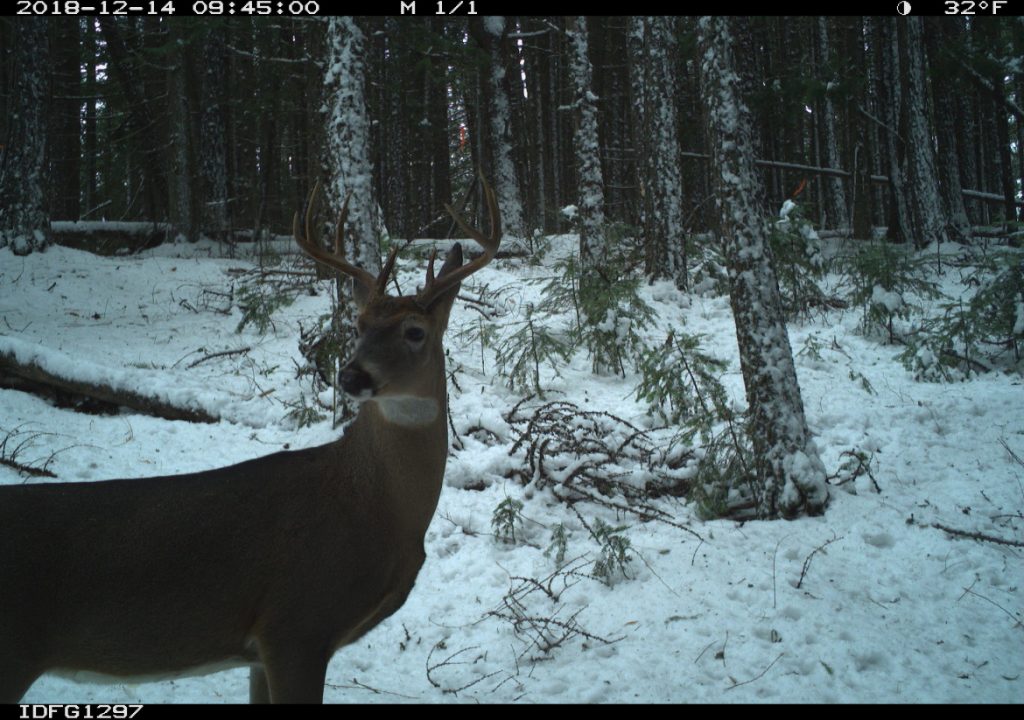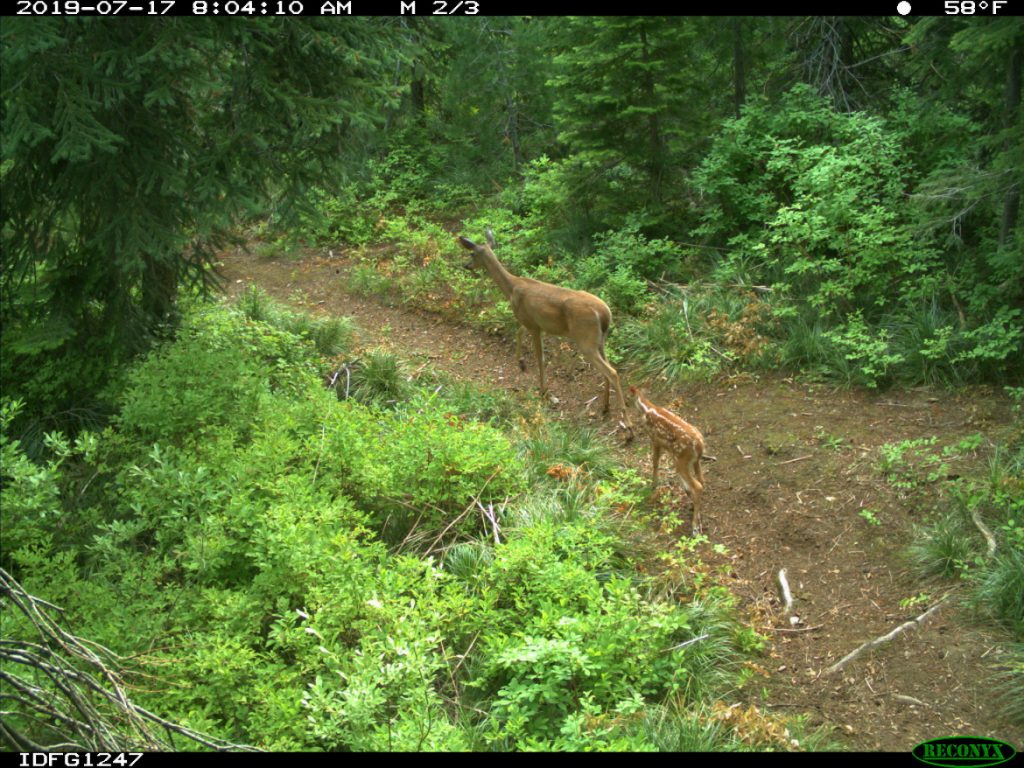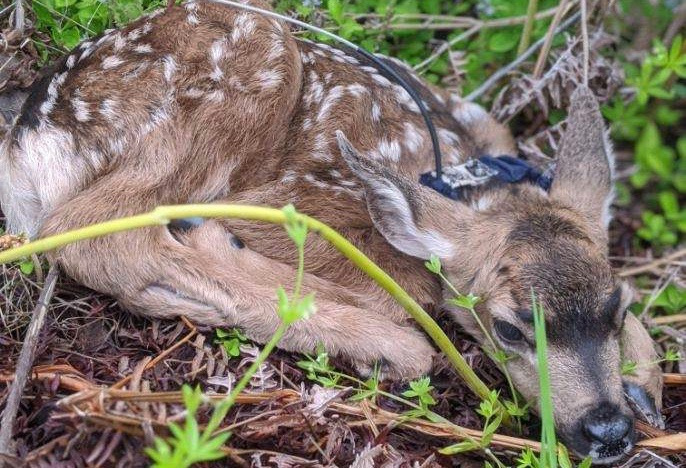
IDFG Details Interesting North Idaho Whitetail Research, Early Results; Part Of Multispecies Study
THE FOLLOWING IS A PRESS RELEASE FROM THE IDAHO DEPARTMENT OF FISH AND GAME
Radio collars and remote cameras are driving the state’s most robust whitetail research project ever
Idaho Fish and Game researchers are currently working to improve their understanding of white-tailed deer populations in Idaho, and equip wildlife managers with the tools to better manage one of Idaho’s most popular big game species.

Researchers made strides in 2020 as they jumped into a multifaceted research program aimed at population ecology, habitat use, survival, mortality, and productivity of white-tailed deer in Idaho.

When the 2020-25 Idaho White-tailed Deer Management Plan was adopted last year, a primary focus was developing and implementing a robust research plan for the species that will span the life of the management plan, and will help managers know when populations change, adapt management to those changes, and better understand and explain the causes of those changes.
The plan identified numerous projects that would take place over the course of six years, including a few that are already underway and providing new insights into Idaho’s whitetails.



What researchers are working on now
Radio collar work: In February and March of 2020, biologists used baited clover traps in Northern Idaho to capture and collar about 140 white-tailed deer in units 1, 6 and 10A.

“That included bucks, does, the prior year’s fawns — it covered the entire spectrum,” said Mark Hurley, Fish and Game’s wildlife research manager. “We are looking at survival for those animals, and that will continue for at least the next three years.”
Fawn survival is key to maintaining deer populations, and researchers are especially interested in the survival rates of newborn white-tailed deer fawns.

“Fawn survival can be the most variable dynamic in deer populations, and it’s often the first place we look,” said Shane Roberts, Principal Wildlife Research Biologist.
Of the 140 total white-tailed deer collared last winter, 60 of them were pregnant does in units 6 and 10A. Those pregnant does were also implanted with a telemetry device, which is paired with the doe’s collar, and is expelled when the doe gives birth to a fawn. The device sends out a signal, allowing researchers to locate the birth site and ultimately, the newborn fawns.
When fawns were born during spring, teams of biologists were in the field to find them and outfit them with their own collars, which were also wirelessly connected to the doe’s collar.
he fawn collars are made of an expandable, elastic material that is designed stay on for about the first year of their lives before falling off. If the collar stops moving for a certain period of time, it will send a notification to biologists that the fawn may have died, allowing them to locate the fawn and investigate the cause of death.
“These fawn collars allow us to study survival rates of newborn fawns, or how many survive through their first year, as well and cause-specific mortality, or how they died — whether it was predation or some other underlying cause,” Roberts said.
Biologists are simultaneously using the doe and buck collars to collect information on adult survival and the cause of any deaths.

Another major component of the white-tailed deer research revolves around how hunting seasons affect survival of bucks. Starting this fall, researchers will be monitoring bucks during the hunting season using GPS equipment, while also monitoring hunter activity. Their goal is to determine how different season structure, level of hunter access, and habitat types influence buck survival throughout the hunting seasons.
Researchers are already monitoring the movements and survival of male white-tailed deer in units 1, 6, 10A and 15.
Remote camera work: Researchers are also using remote cameras to monitor white-tailed deer in Northern Idaho. In the summer of 2020, biologists deployed a network of remote cameras in Unit 6 and Unit 10A, which will be used to estimate whitetail abundance and seasonal distribution. The photos will also be used to monitor herd composition of whitetails, or the proportion of bucks-to-does and does-to-fawns.
Biologists have used remote cameras in a similar manner before, including during the winter of 2018-19 when they generated population estimates and sex ratios of mule deer and elk in three areas of the state, but this will be the first time the method has been used for white-tailed deer.
By combining GPS collar data from the fawn survival study with the photos from the camera network, researchers are also working to develop a method to estimate newborn fawn survival using just the cameras.

What researchers have learned so far
While these studies are ongoing and it will be a while before they have a more complete picture of white-tailed deer ecology, researchers have already gained insights.
For example, in 2019, researchers ran a pilot study in units 15 and 10A using the same GPS technology — doe collars, implants for pregnant does, and fawn collars — as they did this year. The pilot study provided valuable new information on white-tailed deer movements in 10A, which helped researchers refine their capture efforts in 2020 to better represent the overall white-tailed deer population in 10A.
“Especially in Unit 10A, we learned that there are some deer that are migratory, and some that are not,” Roberts said. “We changed our capture strategy this year to make sure our trap sites were in different levels of human interface. We have deer that are habituated to human interaction in Unit 10A. This year, we made sure the clover traps were spread out more to try to sample the entire variety of whitetails.”
“We captured deer in some areas where we thought animals would migrate more than they did. Most ended up on private land, which influences survival and vulnerability,” Hurley added. “This year will be the first year where we have a really good, unbiased dataset where we’ll be able to see how well those animals survive into the fall.”
Over the course of the pilot study, the GPS collars also gave researchers a glimpse into what percentage of newborn fawns typically survive, and what the most common causes of mortality are.
“What we’ve seen so far is that we’re usually losing half or more of them before they’re a year old, and most of the mortality is from bears or mountain lions — primarily bears,” Hurley said. “That’s kind of an interesting result, in that it’s a little different than what we see down in mule deer country.”
How white-tailed deer work fits into a bigger research picture
Although researchers are currently focusing a lot of their attention on white-tailed deer in Northern Idaho, the work they are doing with whitetails is the centerpiece of a holistic multi-species study. The goal is to understand how all populations of large predators and prey interact, and how best to manage each species within the framework of the larger picture.
The remote camera networks being used by researchers to monitor white-tailed deer populations will also be used to monitor elk, moose, and predator populations in Northern Idaho. Elk, moose, black bear, wolf, and mountain lion research, powered by combinations of remote cameras and radio collars, is being done simultaneous with the white-tailed deer research.
